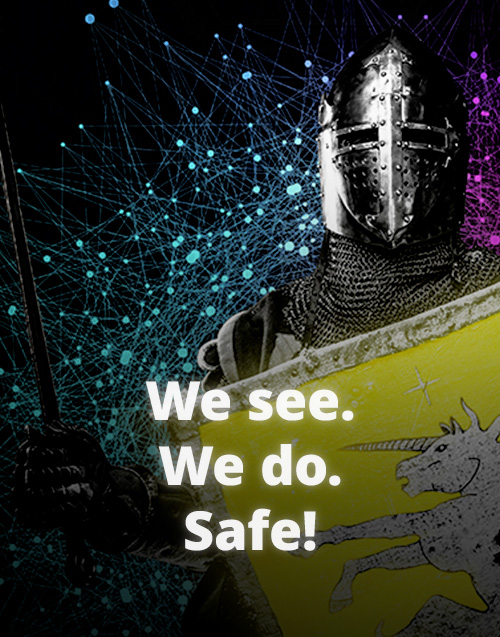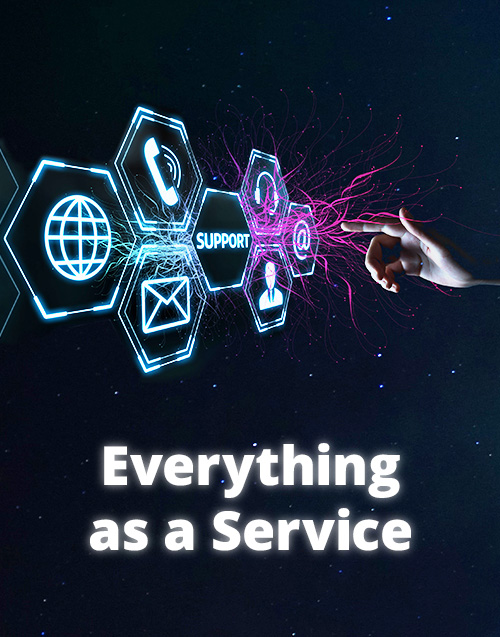What are digital identities?
A digital identity consists of information which in turn represents a person or an organisation online. This does not only include obvious data such as user names or passwords. It also includes a variety of other elements, such as email addresses, social media profiles and even biometric data. This information is used to uniquely identify a person in the digital world and to grant certain rights or access. Of course, digital identities are not static. They continue to evolve. Every time we log into an account, download an app or shop online, we leave traces that shape and influence our digital identity.
Examples & areas of application
Digital identities have become an integral part of our everyday lives. They facilitate access to services, improve the user experience and enable a personalised approach. For companies, digital identities are also an important building block for organising processes efficiently and ensuring the security of their data and systems.
Digital identities enable companies to offer customised services, for example. Online shops suggest products based on previous purchasing behaviour, streaming services recommend films or series that match personal tastes. This personalisation increases user satisfaction and can increase customer loyalty.
However, the most obvious form of digital identity is our social media profiles. They not only contain our names and pictures, but also personal interests, friend lists and interactions. These profiles are also often used to gain access to other services, e.g. through the ‘Sign in via Google’ option.
In online banking, digital identity ensures that only authorised persons can access bank accounts. Two-factor authentication (2FA) is often used here, where additional proof of identity is required in addition to entering a password, e.g. a unique code that is sent to the smartphone.
Digital identities also play an important role in the healthcare sector. Electronic patient records (EPRs) store sensitive health data that can only be viewed and managed by authorised persons. A secure digital identity ensures that this sensitive information is protected.
In organisations, digital identities are essential for accessing internal networks, applications and data. This involves far more than just access. The management of digital identities also includes the administration of rights and roles within the organisation. Who is authorised to access which information? Which data is an employee authorised to view or edit?
Security & protection of digital identities
For companies, it's not just about user-friendliness or the like, but also about security. Managing digital identities is crucial to ward off cyberattacks and protect the integrity of data. In addition, companies must ensure that they comply with regulatory requirements such as the GDPR or NIS2. These regulations define how personal data may be collected, stored and processed.
Aspects such as authentication, authorisation, profile and rights management are of paramount importance here. Authentication ensures that someone really is who they claim to be. Authorisation, on the other hand, determines which resources an authenticated person or system is allowed to use. Profile management involves the creation and management of digital identities. This includes the regular review and updating of access rights and roles to ensure that only authorised persons can access sensitive information. Rights management ensures that users only have the access rights they need for their work - also known as ‘least privilege’.
Conclusion
Digital identities are the key to the digital world. However, it is important for both private individuals and companies to be aware of this significance and the challenges involved. Robust management of digital identities and a strong awareness of the associated security aspects are essential to be able to move safely in a networked world. It is definitely time for digital identities to come more into focus - not just as a technical issue, but as a central aspect of our daily lives and security.
Our recommendation:
Among other things, we stand for security software ‘Made by DTS’ - since 2001, according to the ‘Made in Germany’ seal of quality. As absolute IT security experts, we know the gaps, so we simply develop the appropriate solutions ourselves. We adapt to you, not the other way round, with our own customised and tailor-made software and platforms. 1,000 customers use DTS software, 750 customers use IT security by DTS.
Why is that relevant here? Because we have combined all the aforementioned security aspects for digital identities in just one solution and provide everything in just one licence. DTS Identity is exactly one central platform for all identities and enables true Zero Trust Identity. The in-house developed (C)IAM is provided from the German, certified DTS Cloud so that security-sensitive identity data is not outsourced abroad. Our platform also fulfils numerous important compliance requirements, including GDPR and NIS2.
















